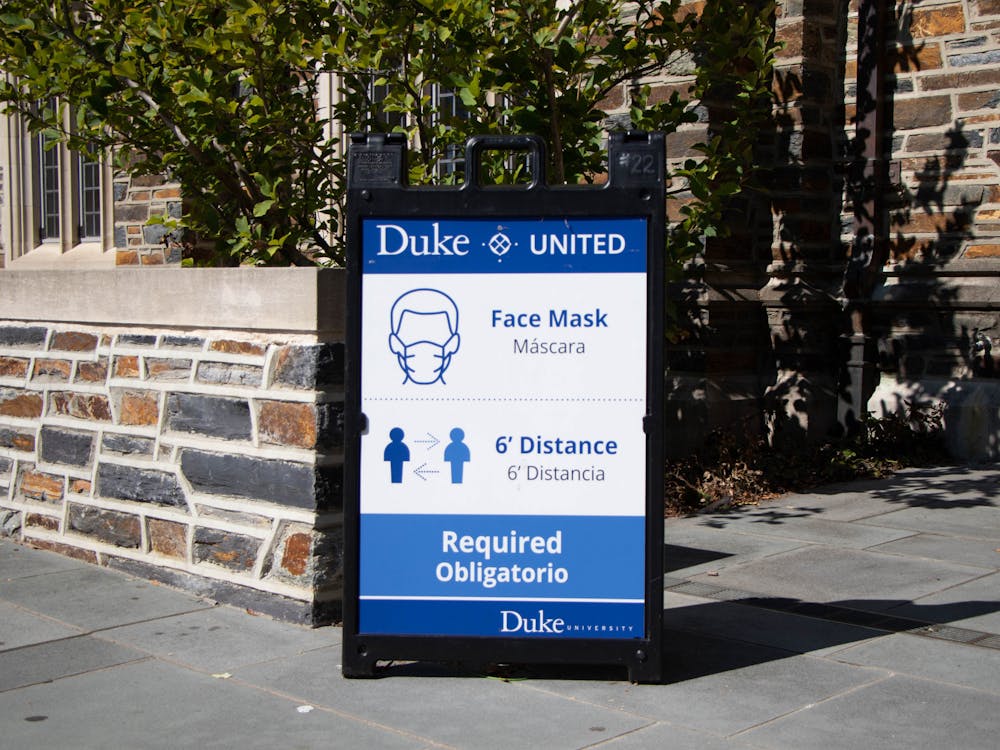Duke researchers are using genome sequencing to analyze the genetic makeup of SARS-Cov-2 for specific mutations and variants. The relevant findings have guided Duke’s administration as they develop the University's COVID-19 policies.
The Wray lab conducts research on the evolution of transcriptional regulation. Alejandro Berrio Escobar, a researcher in the Wray lab, said he developed an interest in learning more about the genetic makeup of the COVID-19 virus during the beginning of lockdown.
To find mutations and identify variants in the virus, “the RNA molecules [are] extracted from the virus [and] each sample is sent to a sequencing facility,” Berrio Escobar said. The digitalized sequence “can be analyzed using computer programming.”
Sequencing the genome of the COVID-19 virus was a huge endeavor, but the research team has discovered significant findings as a result. They found three or four regions that explain how the virus affects humans, according to Berrio Escobar.
Berrio Escobar meets weekly with University administrators to advise the implementation of campus-wide guidelines regarding the COVID-19 virus.
“I provide the report, and I help figure out if there is any variant that is a concern in the population and in the communities around us,” Berrio Escobar said.
Paul Grantham, assistant vice president for communication services, explained that the University administration considers the virus effects from a wide scope.
“We monitor and track the latest trends from around the world, across the country and closer to home,” he wrote. “Often new variants will emerge and lead to outbreaks in other countries before reaching the U.S., so we can anticipate and prepare how we may need to adjust our policies and guidance in advance.”
Many on-campus COVID-19 policies were guided by the research team’s findings. The researchers supported in-person classes for the 2022-2023 academic year despite previous surges in cases at the beginning of the academic year as the infections were traced to interactions occurring outside of classrooms.
With reduced COVID-19 risk and increase in vaccinations, the conversations among researchers and administrators have evolved. Routine surveillance testing and contact tracing are no longer necessary, as confirmed by “tracking the data and understanding how risk factors have changed,” Grantham wrote.
More recently, Berrio Escobar’s research helped forge the decision to make masks optional in classrooms as of Sept. 22, based on the Centers for Disease Control and Prevention’s community risk factor for Durham.
“It is still early, but we have not yet observed any uptick in cases related to easing the mask requirement in classrooms in late September,” Grantham wrote.
Berrio Escobar noted that the masking policy is subject to change if a new higher-risk variant emerges and efforts need to be taken to protect the Duke and Durham communities.
“We live, work and study within the larger community of Durham, so our assessment and recommendations are made within that context,” Grantham said.
The research team is still sequencing ongoing cases from campus and from Duke Hospital. Berrio Escobar emphasized that with a better understanding of the virus, the possibility of new variants still exists.
Get The Chronicle straight to your inbox
Sign up for our weekly newsletter. Cancel at any time.

